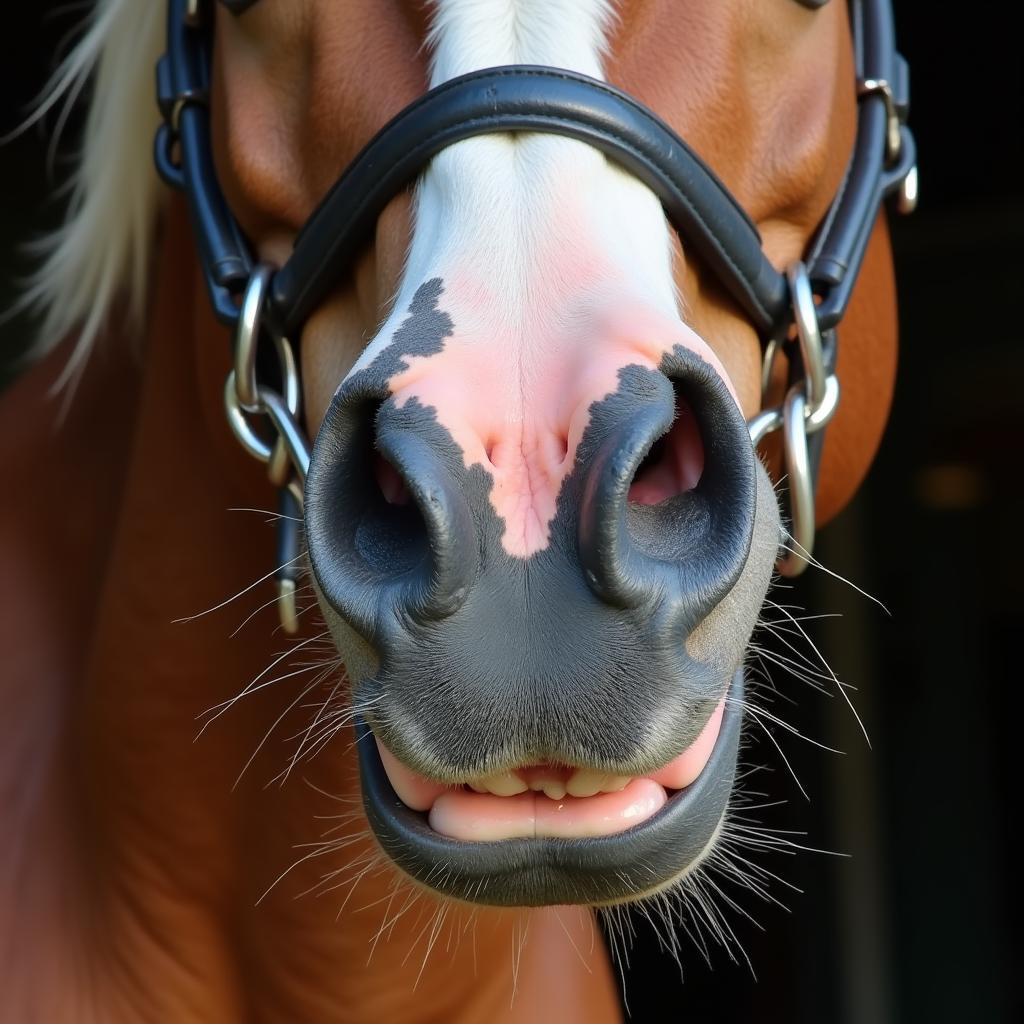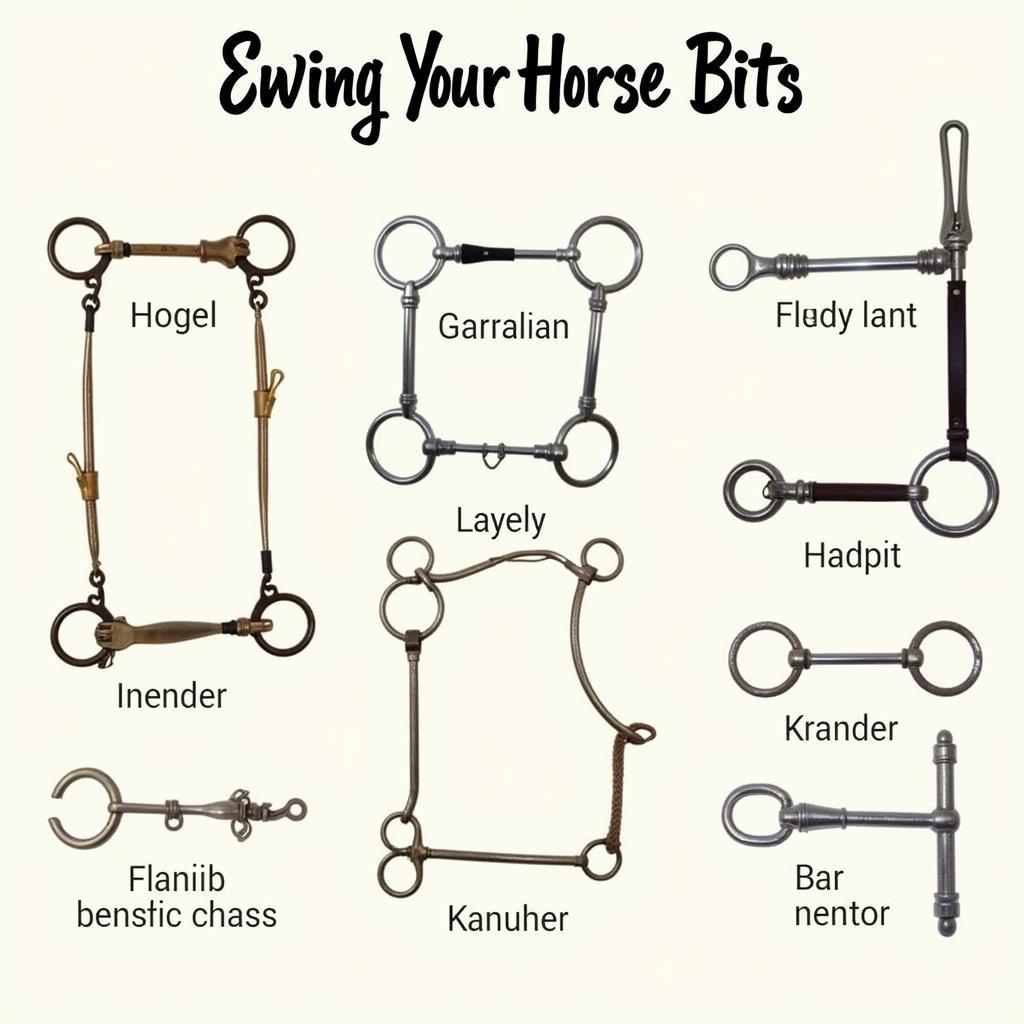Bit Horse Abuse is a serious issue that involves causing pain and distress to a horse through the misuse of a bit, a metal mouthpiece used to control the animal while riding. This type of abuse can have long-lasting physical and psychological effects on the horse and is often rooted in a lack of understanding of proper horsemanship.
 Horse Showing Signs of Bit Abuse
Horse Showing Signs of Bit Abuse
Recognizing the Signs of Bit Abuse
Identifying bit abuse is crucial for the well-being of the horse. Here are some key signs to look out for:
- Mouth Injuries: Cuts, sores, bruising, or scarring around the corners of the mouth, tongue, and bars (the sensitive area between the front and back teeth) can indicate excessive pressure or harsh handling of the bit.
- Head Shaking and Tossing: Horses experiencing pain or discomfort from the bit may shake their heads violently, toss their heads upwards, or try to evade the pressure by putting their heads behind the vertical.
- Reluctance to Take the Bit: A horse that consistently resists the bit, opens its mouth excessively, or backs away when being bridled could be signaling pain associated with the bit.
- Excessive Salivation and Foaming: While some foaming at the mouth is normal during riding, excessive salivation or thick, white foam can be a sign of stress and anxiety caused by bit abuse.
Common Causes of Bit Abuse
Bit abuse can stem from various factors, often unintentional but nonetheless harmful:
- Incorrectly Fitted Bits: Using a bit that is the wrong size, shape, or severity for the horse’s mouth conformation can cause pinching, rubbing, and pain.
- Harsh Hands: Riders with rough or inconsistent hands can inflict significant pain through the bit, even with a properly fitted one. Pulling, sawing, or jerking the reins creates jarring pressure that can damage the horse’s delicate mouth tissues.
- Lack of Training: Inexperienced riders often lack the finesse and sensitivity required to use a bit correctly, inadvertently causing discomfort or injury to the horse.
 Different Types of Horse Bits
Different Types of Horse Bits
Preventing Bit Abuse: A Guide to Ethical Horsemanship
Preventing bit abuse is paramount to ethical horsemanship and ensuring the horse’s physical and psychological well-being:
- Professional Bit Fitting: Consult a qualified equine dentist or bitting specialist to determine the most appropriate bit for your horse’s mouth conformation and riding discipline.
- Develop Soft, Responsive Hands: Focus on maintaining steady, consistent contact with the reins, avoiding any harsh movements or pulling. Seek guidance from a qualified riding instructor to improve your riding skills and develop a sensitive touch.
- Use Positive Reinforcement: Reward your horse for responding correctly to light aids, promoting a willing and relaxed attitude towards the bit.
- Consider Bitless Options: Explore bitless bridles or hackamores as alternatives for horses particularly sensitive to bits or for riders seeking gentler methods of communication.
FAQs: Addressing Common Concerns About Bit Abuse
-
Is it ever acceptable to use a harsh bit on a horse? Using a harsher bit should only be considered as a last resort and under the guidance of a qualified professional. The goal should always be to use the mildest equipment necessary for effective communication.
-
How can I tell if my horse needs a different bit? If you notice any signs of bit abuse, such as head shaking, mouth injuries, or reluctance to take the bit, consult with an equine professional for a bitting assessment.
-
What are some alternatives to traditional bits? Bitless options like hackamores, sidepulls, and bosals rely on pressure points on the horse’s face and nose, offering a gentler approach for sensitive horses.
Taking Action: Protecting Horses from Bit Abuse
If you suspect a horse is a victim of bit abuse, it is crucial to report your concerns to the appropriate authorities, such as animal control or a reputable equine welfare organization. You can make a difference in the life of a horse by speaking up against this cruel practice. Remember, responsible horsemanship prioritizes the horse’s well-being and fosters a partnership built on trust and respect, not force or pain.
For any further questions or concerns about horse care, training, or legal matters pertaining to horses, please refer to the resources available on our website or reach out to us directly. We are committed to promoting ethical horsemanship and ensuring the welfare of horses everywhere.
Need Assistance? Contact Us!
- Phone Number: 0772127271
- Email: [email protected]
- Address: QGM2+WX2, Vị Trung, Vị Thuỷ, Hậu Giang, Việt Nam
Our dedicated customer support team is available 24/7 to provide you with the assistance you need. You can also explore related articles on our website, such as “michigan horse laws” and “free horses in michigan” for further information on horse care and relevant topics.